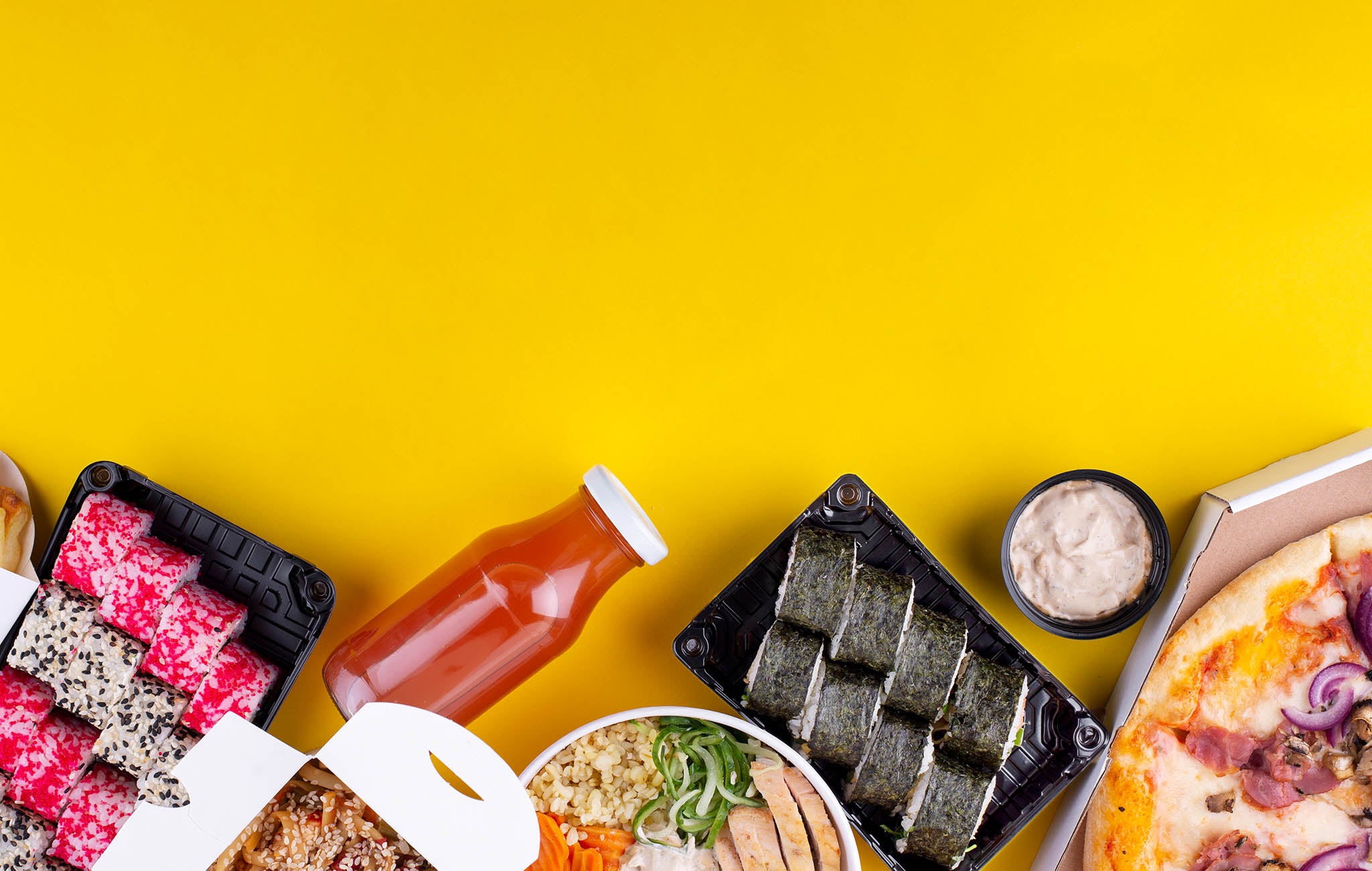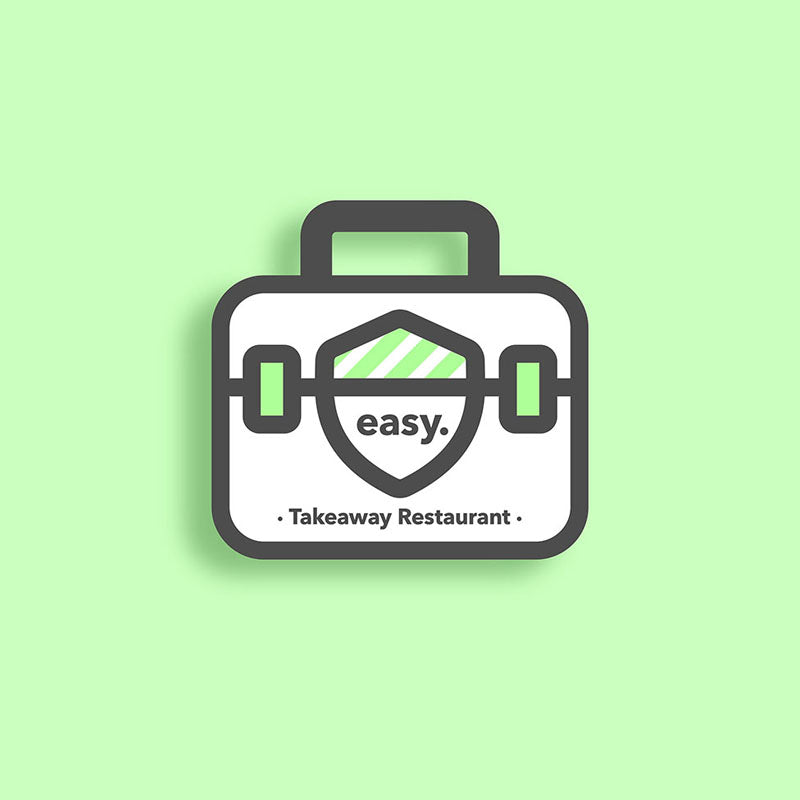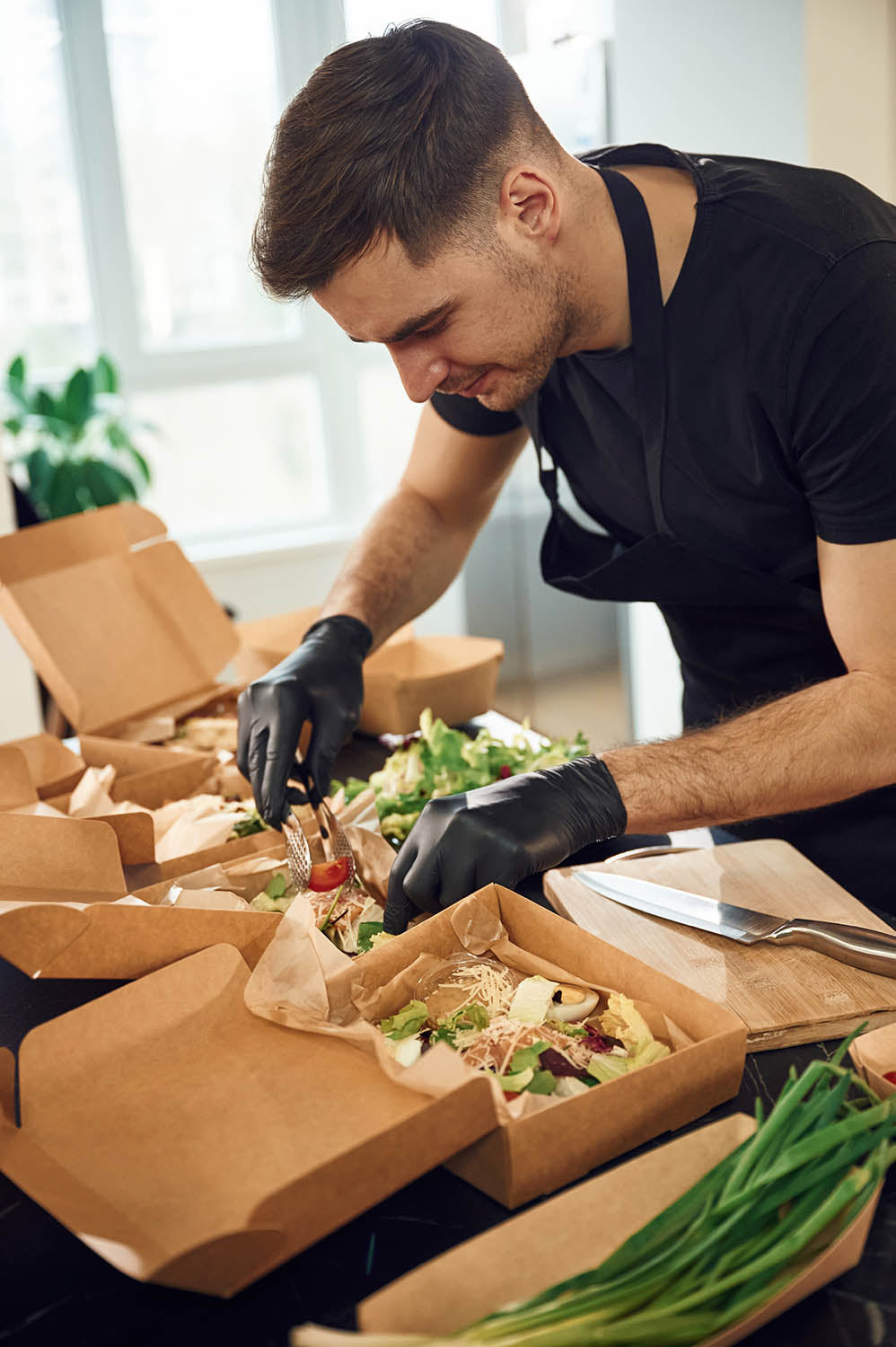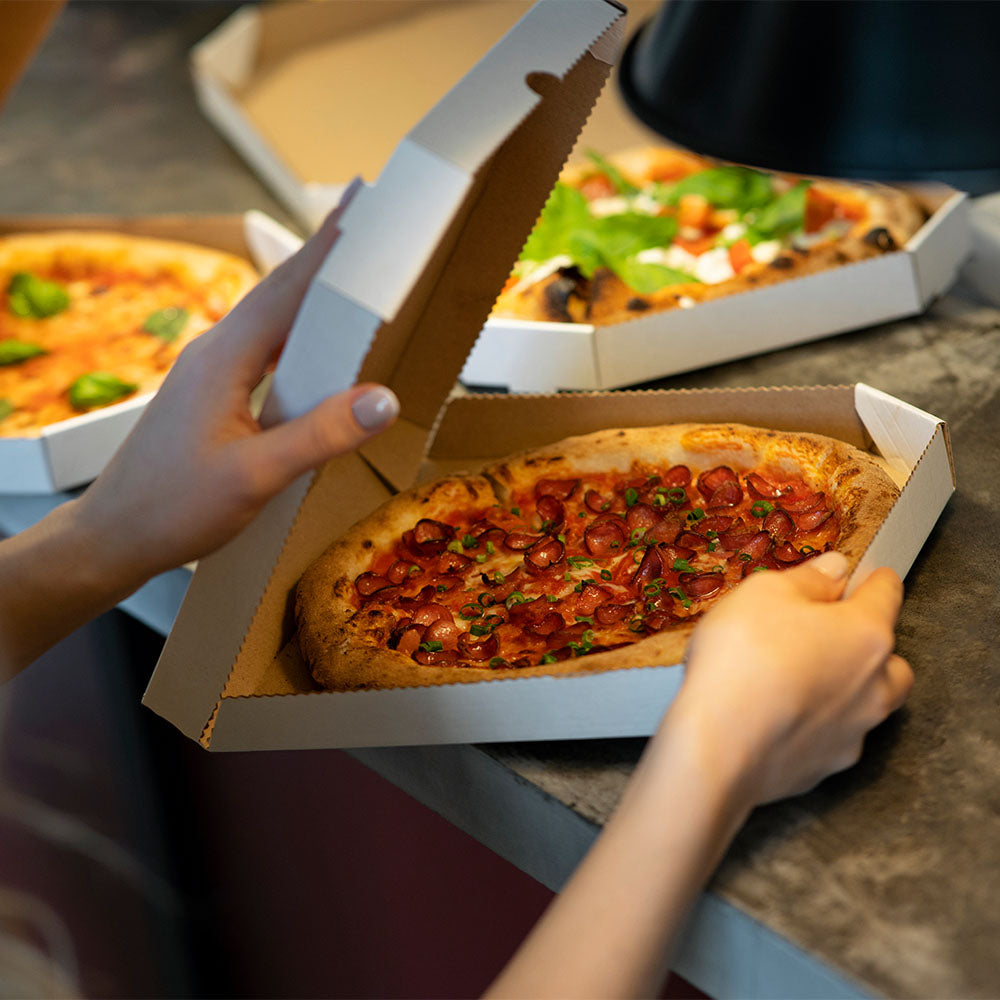
Takeaway Restaurant Health and Safety Templates & Guidance
Pre-filled, editable health and safety templates for takeaway restaurants and fast food businesses — including risk assessments, policies, fire safety templates, COSHH documents, and more to keep your business safe, professional, and compliant.

Take Control of Health and Safety in Your Takeaway Restaurant with Easy-to-Use Templates
Simplify health and safety management in your takeaway restaurant, fast food business, or hot food shop with our industry-specific templates. Whether you run a busy high street pizza takeaway, a late-night kebab shop, a Chinese or Indian takeaway, a fried chicken shop, or a local burger outlet, our editable templates help you stay compliant with regulations while protecting staff, customers, and delivery drivers from everyday risks in fast-paced kitchen and serving environments.
Many templates come pre-filled with detailed, takeaway-specific content — including risk assessments, health and safety policies, fire safety forms, COSHH documents, accident reports, and staff safety guidance. This makes completion quick, accurate, and stress-free. With our ready-to-use tools, you can focus on preparing quality food, managing orders efficiently, and keeping customers satisfied while maintaining the highest standards of safety and compliance across your takeaway business.

Safety First: The Key Ingredient in Successful Takeaway Restaurants
The sight of freshly baked pizzas, the rich spices of a curry, the sizzle of burgers on the grill, and the constant buzz of customer orders — these are the everyday scenes in busy takeaway restaurants and fast food shops. But behind the counter, there’s one vital factor that determines the success, safety, and reputation of every takeaway: effective health and safety management.
Protecting Customers from Food Hazards
Whether you run a pizza takeaway, kebab shop, Indian takeaway, or Chinese takeaway, the risks around food preparation are the same. Food-borne illness, cross-contamination, and poor allergen control can all have serious consequences. Proper handling, storage, and preparation protect customers while safeguarding the business’s reputation.
Keeping Staff Safe in a Fast-Paced Kitchen
Takeaway kitchens are high-pressure environments filled with hazards — hot cooking equipment, sharp knives, slippery floors, and heavy lifting. Without clear procedures and training, accidents can quickly happen. Prioritising staff safety helps prevent injuries, boosts morale, and supports productivity.
Building Customer Trust Through Safety
Visible standards of cleanliness and strong safety procedures reassure customers. When a takeaway demonstrates good hygiene, allergen awareness, and fire safety, it builds trust that leads to repeat orders, positive reviews, and recommendations — essential for long-term success.
Avoiding Legal and Financial Risks
Non-compliance with health and safety requirements can result in heavy fines or even closure. Staying compliant with food hygiene, fire safety, and workplace regulations protects both the business and its reputation, ensuring smooth operations.
Creating a Safer, More Resilient Business
A culture of safety shows employees their well-being is valued, reducing staff turnover and creating a stronger team. Well-prepared takeaways are also more resilient, able to adapt quickly to unexpected challenges while keeping staff and customers safe.
Top 3 Health and Safety Hazards in Takeaway Restaurants:
-

Food Hygiene & Allergen Control
View ProductsHygiene in takeaway restaurants is critical to safeguard public health, comply with food safety regulations, and avoid enforcement action. Takeaways must follow strict procedures for food storage, preparation, cleaning, and allergen management. Clean, well-maintained premises and clear allergen information help build customer trust and repeat business, while protecting against food-borne illness and allergic reactions.
-

Sharp Knives & Utensils
View ProductsSharp knives and food preparation equipment in takeaway restaurants can cause cuts and lacerations, especially during busy periods. Ensuring safe knife techniques, proper storage, and staff training is vital. Protective equipment such as cut-resistant gloves, along with clear procedures, help prevent injuries and keep the kitchen running safely and efficiently.
-

Handling Hot Food & Packaging
View ProductsHandling hot food in takeaway restaurants presents a risk of burns and scalds, potentially injuring staff when preparing or packaging meals, and customers when collecting or receiving deliveries. Proper safety procedures — such as using protective gloves, safe handling of hot containers, and thorough staff training — are essential to reduce these risks and maintain a safe environment.

Why pay expensive consultant fees when you can manage health and safety yourself?
Improve your compliance while saving time and money by creating health and safety documents, customised to your business, yourself. Our health and safety range for takeaway restaurants and fast food businesses covers a suite of essential templates including health and safety policies, risk assessments, COSHH forms, fire safety documents, health and safety guidance, safety posters, and more.
Benefits of managing health and safety yourself...
-

Improve safety
Health and safety at work is about preventing accidents, incidents and ill-health by assessing the work environment, the activities within it, and taking appropriate action.
-

Ensure compliance
Our ready to use templates, many of which are pre-filled, will enable you to quickly increase your compliance to health and safety laws and regulations.
-

Save money
With health and safety consultants often charging upwards of £400 per day, there is a better way. Take control and save yourself time and money.

H&S Compliance Solutions for Takeaway Food Businesses
For many small takeaway and fast food business owners, health and safety compliance can feel like an overwhelming burden. With limited budgets and tight schedules, it can be difficult to find the time and resources needed to fully manage health and safety requirements while also keeping the business running smoothly.
The intention to maintain a safe and compliant workplace is always there, but the practical demands — such as staff training, safe food handling, allergen management, equipment maintenance, and fire safety checks — can be daunting. This can sometimes lead to shortcuts being taken, which not only puts staff and customers at risk but may also result in enforcement action, legal penalties, or reputational damage.
It’s a difficult balancing act, but it highlights the critical importance of health and safety in every takeaway restaurant, fast food outlet, and hot food shop — no matter the size.
At easyhealthandsafety, we make compliance easier for takeaway and fast food businesses by providing ready-to-use health and safety templates and guidance. Our resources are simple to adapt, affordable, and designed to save time while keeping your business safe and compliant.
Frequently Asked Questions
Takeaway Restaurant Health and Safety FAQs
How can I create a risk assessment for my takeaway restaurant?
The easiest way to create a risk assessment for your takeaway restaurant is to use a pre-filled template designed specifically for the takeaway food industry.
Start by identifying potential hazards such as hot oil, sharp knives, slips, trips, fire hazards, or contact with cleaning chemicals. Record who might be harmed, assess the level of risk, and outline the controls you will put in place to reduce it. Regularly review and update your risk assessment, especially when new equipment, menu items, or staff are introduced.
Our editable Takeaway Restaurant Risk Assessment Template is pre-filled with the most common hazards and control measures for takeaway restaurants, fast food outlets, kebab shops, pizza takeaways, and other food-to-go businesses. Simply edit the details to suit your specific operation for easy, quick, and accurate compliance.
If you’d prefer a complete compliance solution, our Takeaway Restaurant Health and Safety Template Bundle includes over 60 essential health and safety documents — including the takeaway restaurant risk assessment, policies, fire safety forms, COSHH assessments, and staff safety guidance — everything you need to manage health and safety across your business efficiently.
Do takeaway restaurants need to complete a risk assessment?
Yes — all takeaway restaurants and fast food businesses must complete a suitable and sufficient risk assessment to comply with health and safety law.
Under the Health and Safety at Work etc. Act 1974 and the Management of Health and Safety at Work Regulations 1999, employers are legally required to assess and manage risks to employees, customers, and anyone affected by their work. This includes hazards such as burns from hot cooking equipment, slips and trips, fire safety, manual handling, and exposure to cleaning chemicals.
Our editable Takeaway Restaurant Risk Assessment Template is pre-filled with common hazards found in takeaways, pizza shops, kebab shops, and fast food outlets, making it quick and easy to adapt for your business.
If your takeaway employs five or more people, you are legally required to record your risk assessment in writing. However, even if you have fewer than five staff, producing a written risk assessment is strongly recommended as best practice. It demonstrates your commitment to staff and customer safety, provides clear evidence of compliance, and can offer valuable protection in the event of an inspection or legal claim. A clear, well-documented risk assessment also helps improve day-to-day safety standards, reduce accidents, and promote a positive health and safety culture across your business.
What health and safety documents do I need for a takeaway restaurant?
Every takeaway must have core health and safety documents in place to stay compliant and protect staff and customers.
Takeaway restaurants and fast-food outlets should keep an up-to-date Health and Safety Policy (legally required if your takeaway employs five or more people), a completed Risk Assessment, and records for staff training, accident reporting, fire safety checks, and COSHH (hazardous substances). Having these documents in place shows regulators you are meeting your legal duties.
For a complete compliance solution, our Takeaway Restaurant Health and Safety Template Bundle includes over 60 essential health and safety documents — including the takeaway restaurant risk assessment, policies, fire safety forms, COSHH assessments, and staff safety guidance — everything you need to manage health and safety across your business efficiently.
Do small takeaway businesses still need health and safety paperwork?
Yes. Even small takeaways and sole traders must manage health and safety, though legal requirements scale with staff numbers.
If you have fewer than five employees, you’re not legally required to have a written health and safety policy or formal risk assessments — but having these documents in place is strongly recommended as best practice. Written records demonstrate your commitment to safety, provide clear guidance for staff, and show regulators or insurers that you take compliance seriously. They can also help protect your business in the event of an inspection, accident, or legal claim by proving that reasonable steps were taken to manage risks and safeguard both staff and customers.
For peace of mind, many small takeaways choose our Takeaway Restaurant Health and Safety Template Bundle, which includes over 60 essential health and safety documents — including policies, risk assessments, fire safety, guidance, and more in one affordable package. A document user guide is also included to make compliance in your takeaway restaurant effortless.
Do takeaway restaurants need a health and safety policy?
Yes. If you employ five or more staff in your takeaway restaurant, you are legally required to have a written health and safety policy under the Health and Safety at Work etc. Act 1974. However, even smaller takeaways, fast-food outlets, and food-to-go businesses are strongly advised to have one in place as a best-practice measure. A clear and well-structured policy demonstrates professionalism, shows your commitment to keeping staff and customers safe, and helps ensure consistent safety standards across your business.
Having a written policy can also protect your business from potential legal consequences. It provides evidence that you’ve taken reasonable steps to identify and control risks, meeting your duties under health and safety law. If an incident or inspection occurs, a documented policy can help show compliance and reduce the likelihood of enforcement action or penalties.
Our editable Health and Safety Policy Template makes it quick and easy to create a compliant policy tailored to your takeaway or fast-food business. The single page format is easily adaptable to suit your takeaway operations — covering essential areas such as food handling, fire safety, staff training, hygiene, and accident reporting. It’s the simple, cost-effective way to stay compliant, avoid costly mistakes, and demonstrate your commitment to safety and professionalism.
What fire safety requirements apply to takeaway restaurants?
All takeaways must have a fire risk assessment and suitable fire precautions in place.
The Regulatory Reform (Fire Safety) Order 2005 requires every takeaway to carry out and regularly review a Fire Risk Assessment. You must also maintain fire extinguishers, alarms, clear escape routes, and train staff in emergency procedures.
Our Fire Risk Assessment Template and Essential Fire Safety Template Bundle are designed specifically to help ensure you stay compliant to fire safety laws and regulations.
Do I need COSHH assessments for cleaning chemicals in my takeaway?
Yes, COSHH assessments are a legal requirement for cleaning chemicals and other hazardous substances.
Takeaways use a wide range of cleaning products, degreasers, and sanitisers that can cause burns, skin irritation, or breathing problems if not handled correctly. The COSHH (Control of Substances Hazardous to Health) Regulations 2002 require you to assess these risks and put controls in place. Our COSHH Risk Assessment Templates for various hazardous substances are pre-filled and easy to customise for your business.
What training do takeaway staff need for health and safety?
Staff must be trained to safely carry out their work and understand your health and safety procedures.
Essential training for takeaway staff includes food hygiene, allergen awareness, fire safety, manual handling, slips and trips, and safe use of equipment. Training should be tailored to your specific business and properly recorded.
For a complete compliance solution, our Takeaway Restaurant Health and Safety Template Bundle includes over 60 essential health and safety documents — including H&S induction forms, staff safety guidance, risk assessment, policies, fire safety forms, COSHH assessments, and more — everything you need to manage health and safety across your business efficiently.
How often should I review health and safety in my takeaway?
In takeaway restaurants, health and safety documents should be reviewed at least annually, or sooner if significant changes occur.
Risk assessments, policies, and safety procedures must be checked at least once a year, and also updated if you move premises, introduce new equipment, or expand your team. Regular reviews demonstrate to inspectors that you are proactive. Our editable templates make reviewing and updating your documents fast and simple.
For a complete compliance solution, our Takeaway Restaurant Health and Safety Template Bundle includes over 60 essential health and safety documents — including the takeaway restaurant risk assessment, policies, fire safety forms, COSHH assessments, and staff safety guidance — everything you need to manage health and safety across your business efficiently.
What are the penalties for poor health and safety in a takeaway?
Failure to comply with health and safety law can lead to serious financial and legal consequences.
Inspectors can issue improvement or prohibition notices, impose heavy fines, or in extreme cases prosecute business owners personally. A poor food hygiene rating can also harm your reputation and reduce sales. Using our Takeaway Restaurant Risk Assessment Template and Health and Safety Policy will help to ensure you have the correct documents in place to demonstrate compliance and reduce risk.
For a complete compliance solution, our Takeaway Restaurant Health and Safety Template Bundle includes over 60 essential health and safety documents — including the takeaway restaurant risk assessment, policies, fire safety forms, COSHH assessments, and staff safety guidance — everything you need to manage health and safety across your business efficiently.
Which risk assessments are required for takeaways and fast-food shops?
Every takeaway must carry out risk assessments covering the key hazards in the business.
Typical assessments include a general risk assessment, a fire risk assessment, and COSHH risk assessments for cleaning chemicals. Manual handling, slips and trips, and delivery driver safety assessments may also be needed.
Our Takeaway Restaurant Risk Assessment and COSHH Risk Assessment Templates come pre-filled with relevant content that can be easily adapted to your takeaway food business.







